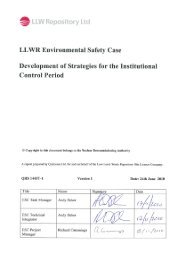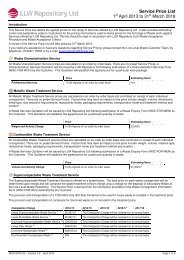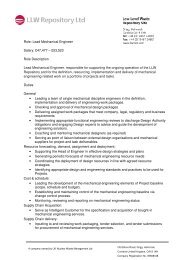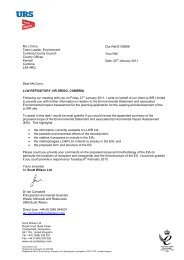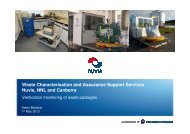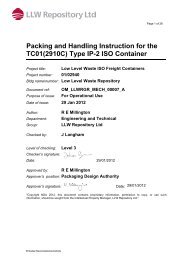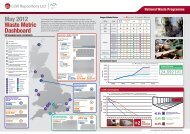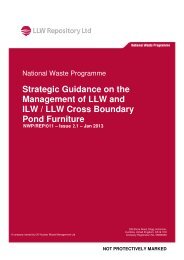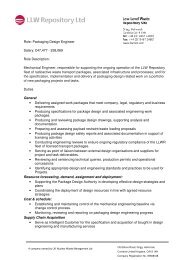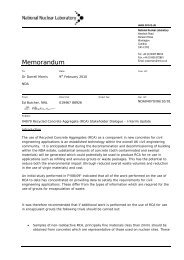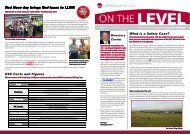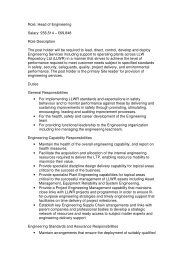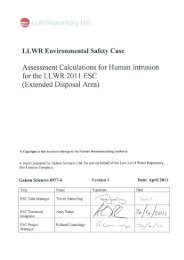Independent Peer Review of - Low Level Waste Repository Ltd
Independent Peer Review of - Low Level Waste Repository Ltd
Independent Peer Review of - Low Level Waste Repository Ltd
Create successful ePaper yourself
Turn your PDF publications into a flip-book with our unique Google optimized e-Paper software.
<strong>Peer</strong> <strong>Review</strong> <strong>of</strong> LLWR Response to S9R2LLWR_2008-8-2Version 1LLWR site, but not the capped area, even earlier than this (100-1,000years) due to a combination <strong>of</strong> increasing sea level and high tides. Whilstwe have found no obvious flaws in the link between the climate scenariosand facility destruction by erosion, we suggest that the link might besubjected to further scrutiny.58. The peer review panel believes that the high probability and shorttimescales for inundation and erosion <strong>of</strong> the facility raise questionsregarding the suitability <strong>of</strong> the site for near-surface radioactive wastedisposal, particularly those containing long-lived radionuclides. Forexample, IAEA Safety Requirement WS-R-1 on Near-Surface Disposal <strong>of</strong>Radioactive <strong>Waste</strong> states ‘The frequency and intensity <strong>of</strong> processesaffecting the stability <strong>of</strong> land forms such as flooding, erosion, landslidingor weathering shall be such that they would not significantly affect theability <strong>of</strong> the disposal system to isolate the radioactive waste’ (IAEA1994).59. This site suitability issue is not directly addressed in the submission madein response to Requirement 2, but the peer review panel considers that thejustification for continued disposals at the site (i.e., to the vaults),particularly <strong>of</strong> long-lived wastes, needs to be tackled head-on.60. We understand that the SLC regards consideration <strong>of</strong> whether the LLWRfacility should continue to receive waste for disposal, given the threat <strong>of</strong>coastal erosion, to be part <strong>of</strong> the on-going UK LLW management strategydevelopment process. We note that the issue is also central to the safetycase for the LLWR and that, logically, there should be a two way transfer<strong>of</strong> information between the LLWR safety case and the LLW managementstrategy.3.3 Development and Justification <strong>of</strong> Scenarios3.3.1 Scenarios61. For the 2002 PCSC, BNFL undertook a formal scenario developmentprocess, including an extensive analysis <strong>of</strong> FEPs. BNFL (2002b)identified a Central Projection Scenario and scenarios involving futurehuman actions. BNFL (2002b) distinguished three variants <strong>of</strong> the CentralProjection Scenario according to whether they ended with destruction <strong>of</strong>the repository by coastal erosion, valley glaciation or regional glaciation.BNFL’s coastal erosion variant was characterised by a period <strong>of</strong>intensifying enhanced global warming and progressive sea-levelrise. This resulted in gross disruption <strong>of</strong> the repository by coastalerosion in the period 500-1,000 years after present.BNFL’s valley glaciation variant was characterised by a period <strong>of</strong>mild global warming during which the repository could be disruptedby coastal erosion in the period 2,000-5,000 years after present.TerraSalus Limited 15 2 September 2008



